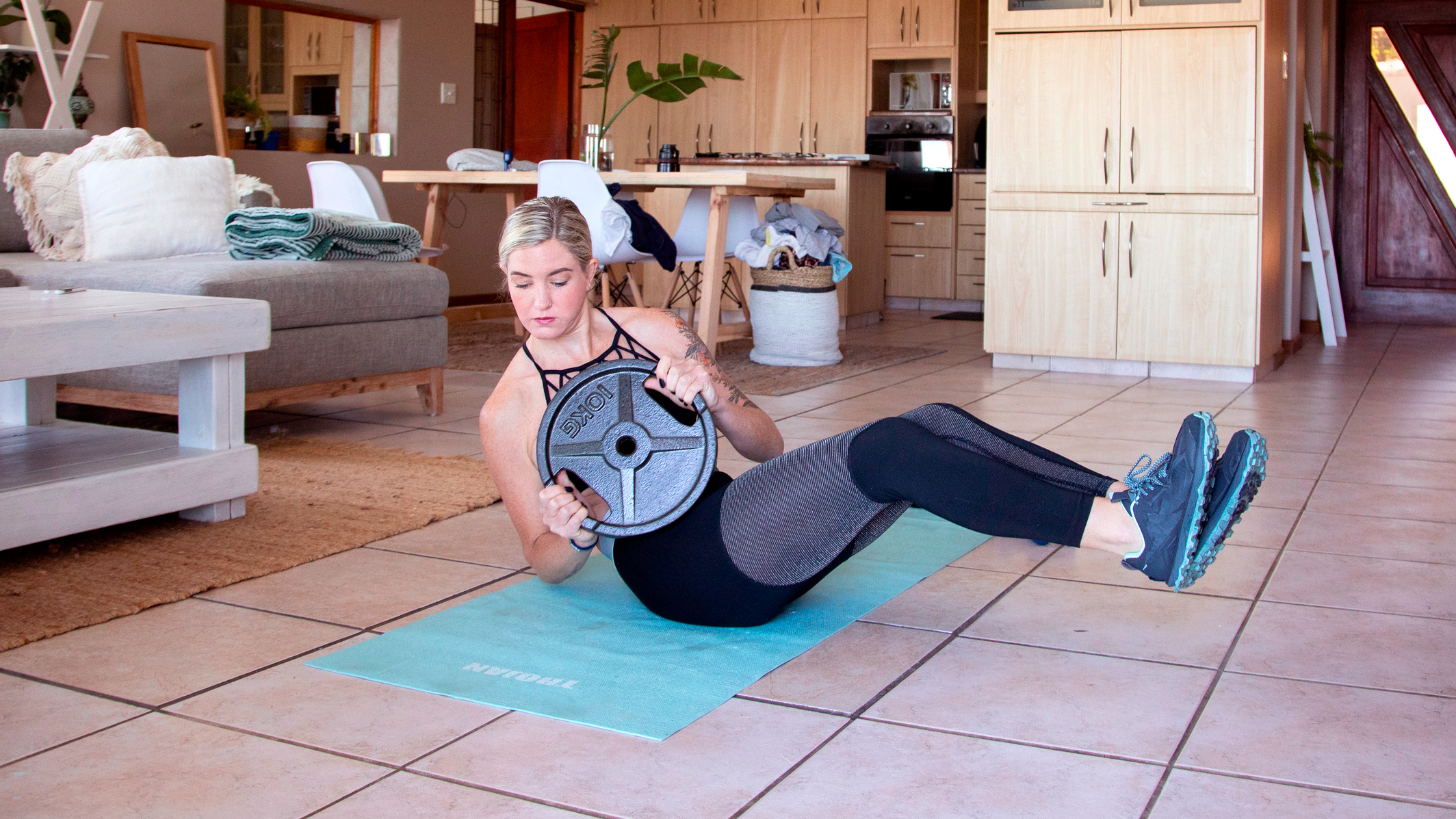
I recently started training with a weight plate after writing about my experience of weighted vests and I’m amazed how versatile it is. A weight plate is flat and some varieties feature built-in handles to make gripping easier. While they are typically used to load barbells or to attach to machines, they can also be used on their own for a variety of exercises.
As a personal trainer I sometimes hear from clients that a weight plate is easier to hold than dumbbells, particularly during triceps extensions because the load feels more evenly distributed.
So when I came across this full-body weight plate workout by Fernanda Shaw, a NASM-certified personal trainer and nutrition coach, I was keen to try it.
Shaw uses a 10kg weight plate, but if you’re a beginner I would recommend starting with 5kg. The workout has just four moves and you can substitute the plate for a dumbbell or kettlebell if you don’t have a plate handy. They are an affordable item to add to your home gym, though, with plentiful options at Amazon, Dick's and Walmart.
How to do the weight plate workout
Shaw recommends doing each of the four exercises for 45 seconds, with 15 seconds rest. Complete four rounds, taking one minute of rest in between rounds.
Why you should try weight plate training
Weight plates can be used for stand-alone exercises or full-body workouts, like Shaw’s circuit. You may find plates with built-in handles are easier to grip than standard weight plates and for some might be easier than holding a chunky kettlebell handle. It will still challenge your grip strength and help to strengthen your lower-arm muscles.
Grip strength is an important indicator of overall health and research suggests an association between a decline in grip strength and an increased risk of heart disease, arthritis and osteoporosis.
Many weight plate exercises—like Shaw’s—are front-loaded, meaning you hold the plate in front of your body. This positioning forces your core to work harder to stabilize you, helping to strengthen your mid-section.
You can also use a plate in other ways, like standing on it for heel-elevated squats that shift the focus from your glutes to your quads. Or use it as a platform for deficit lunges or deadlifts, which increase the range of motion, and therefore the difficulty, of the exercise.







